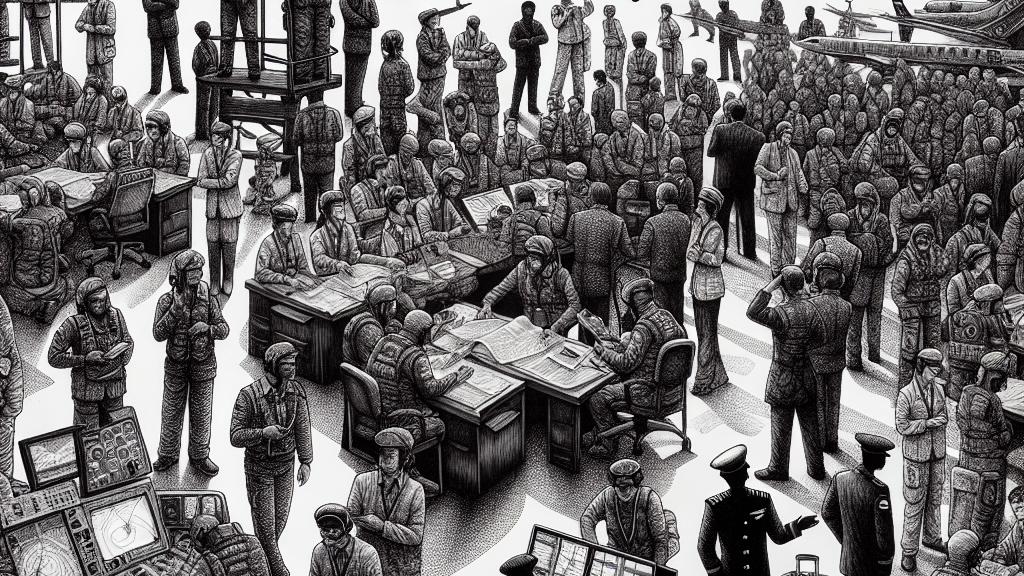Understanding the FAA's Hiring Changes and Diversity Focus
Overview
- The FAA's shift towards diversity in hiring under Obama and Biden sparked controversy.
- A tragic mid-air collision raised serious safety concerns related to this focus.
- The current administration aims to restore merit-based hiring practices to enhance safety.

Major Overhaul of FAA Hiring Practices
In recent years, particularly during the Obama and Biden administrations, the Federal Aviation Administration (FAA) has undergone a significant overhaul in its hiring practices, heavily emphasizing diversity and inclusion. This initiative aimed to broaden the applicant pool by allowing individuals from varied backgrounds—including those without four-year degrees or specific aviation experience—to apply for vital roles. For instance, an effort was made to recruit more women and minorities into traditionally male-dominated fields. However, this approach faced harsh criticism after a catastrophic accident occurred in January 2025, when a passenger plane collided with a military helicopter near Washington D.C., leading to the heartbreaking loss of 67 lives. This tragic incident ignited debate about whether prioritizing diversity may have inadvertently compromised the safety and skill levels required for such crucial positions as air traffic controllers.
Trump’s Response and Policy Reversal
Following the crash, former President Donald Trump swiftly took to social media and press briefings to criticize the FAA's diversity-focused hiring practices. He claimed that these policies led to the selection of inadequately qualified personnel, thus posing a risk to aviation safety. Drawing attention to his predecessor's policies, Trump maintained that the focus on diversity could come at the cost of competence. Shortly thereafter, his administration took decisive action; a memorandum was issued that mandated an end to diversity initiatives, returning to a strict merit-based recruiting model. This dramatic policy shift was not merely a bureaucratic adjustment—it reflected a renewed commitment to uphold the highest standards of safety by ensuring that only the most highly qualified individuals are entrusted with critical air traffic responsibilities.
Navigating the Safety vs. Diversity Debate
The ongoing debate about safety versus diversity in aviation hiring continues to evoke passionate arguments on both sides. Critics of the FAA's previous diversity initiatives assert that these programs risk compromising the principle of hiring strictly based on proven capability and performance. They highlight that air traffic control is a demanding job requiring quick thinking and precise execution, suggesting that underqualified individuals might not manage the high-stakes environment effectively. On the flip side, advocates for diversity argue that diverse teams foster better decision-making and innovation, citing studies that demonstrate improved performance through varied perspectives. Importantly, it's essential to recognize that historically, the FAA has always enforced stringent qualifications for its workforce, which include intense training and comprehensive assessments. Moreover, individuals with disabilities must still meet the same rigorous standards expected of all candidates. Thus, as these discussions unfold, the key question remains: how can we protect safety without sacrificing our commitment to inclusivity?
The Path Forward: Striking a Balance
As we look ahead, the crucial task for the FAA and the broader aviation industry is to strike an appropriate balance between diversity and safety. The current administration's efforts to reassess hiring practices present an opportunity to rethink how we can foster an inclusive environment without compromising the essential safety measures that protect passengers and crew alike. Perhaps the answer lies in implementing comprehensive training programs targeting underrepresented groups while maintaining high entry standards for critical positions. This dual approach could pave the way for a workforce that reflects society’s diversity while adhering to the highest standards of excellence. Ultimately, finding this balance will not only ensure the safety of our skies but also mark a progressive step in how we define capability in aviation. In conclusion, the conversation surrounding aviation safety is as much about policy as it is about philosophy—an opportunity to reinvent and redefine what it means to serve the public in the ever-evolving landscape of air travel.

Loading...